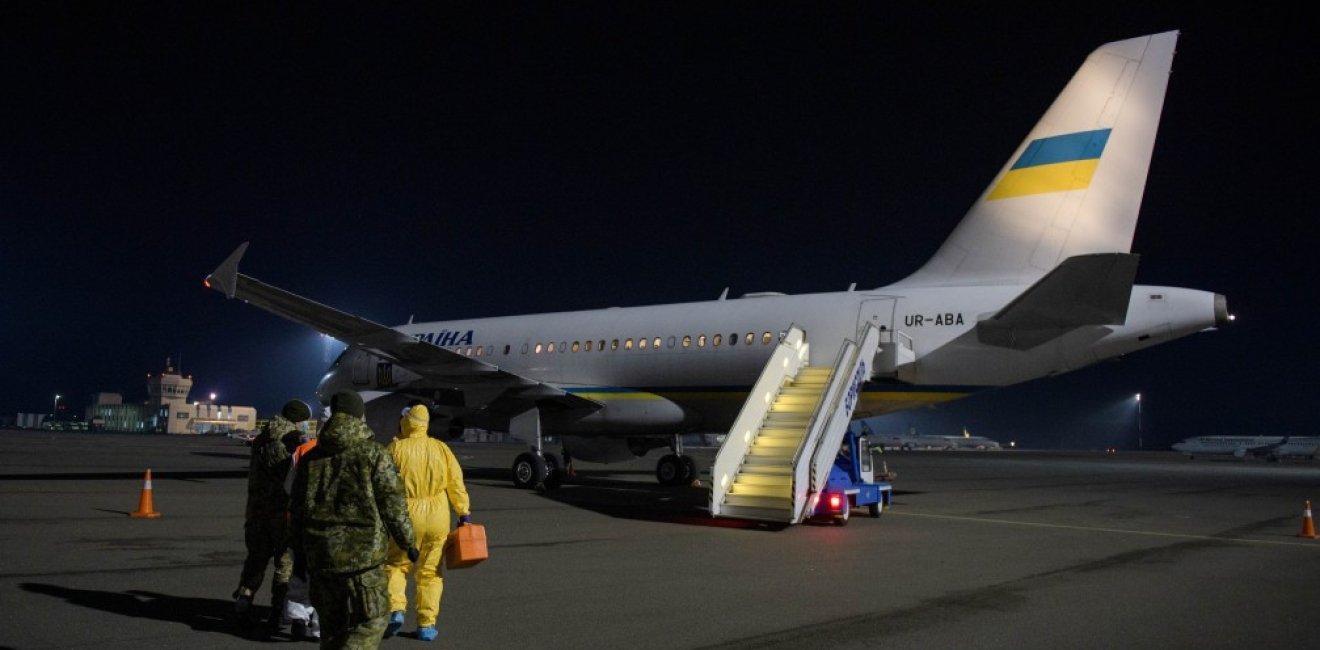
A blog of the Kennan Institute
BY YURIY VAKHEL
Ukraine so far has not seen the levels of COVID-19 infection that countries like China, Italy, or Iran are experiencing. Yet in the absence of tests, and after a considerable reduction in epidemiological service, the country has been caught on its back foot. Between March 17 and 20, the Ukrainian government and local administrations launched quarantine measures that, as President Volodymyr Zelenskyy stated in his address, should help protect Ukrainians from the worst consequences of the virus. The effectiveness of these and other measures, however, almost certainly will be reduced by organizational lack of capacity, disarray, and citizens’ fears and disbeliefs.
A Worried Ukraine
Unlike the Italian or UK cabinets, the Ukrainian leadership has avoided choosing between the population’s health and the economy to prioritize in its response to the epidemic. Kyiv wants to protect both simultaneously.
Accordingly, parliament has adopted special laws that provide some level of economic and financial security to people and banks. The cabinet has introduced policies that support the economy, as well as soft quarantine measures, and has warned Ukrainians that the quarantine may become more restrictive soon. So far, retail commerce and various public activities have been limited but not canceled. Public transport is also limited. Subways in major (but not all) cities have stopped running, and their services have been replaced with bus transit. The buses are overcrowded.
Early public reactions to these precautions have been rather negative: people are generally not happy with the shopping and transit restrictions. Nor have they fully digested the seriousness of the situation. According to a recent poll, more than 72 percent of Ukrainians know about the hygiene measures promulgated by the World Health Organization to slow the spread of the virus, such as frequent handwashing and avoiding crowds, but only between 49 and 55 percent follow those measures. This in the face of another figure from the poll: 70 percent of Ukrainians worry their next of kin might die from COVID-19 infection.
Though President Zelenskyy takes to the media daily to inform Ukrainians about the measures being taken to fight the epidemic and provide some reassurance, additional strong messaging is needed. This will be a challenge for his relatively unseasoned team to provide. Without a focused information campaign, however, fears and disbelief will abide.
Pandemic Weakens Ukraine’s Economy
Even before the epidemic hit Europe, Ukraine’s economy was not in the best shape. Production has declined over the past several months, accompanied by some budgetary shortfalls. With panic dragging down the markets, currency volatility has begun: the Ukrainian hryvnia steadily lost value in the first weeks of the epidemic. And with further stagnation of the international markets, the demand for Ukrainian metal, iron ore, and agricultural products has fallen. The COVID-19 pandemic has exacerbated the situation because China is a key trading partner for Ukraine.
Ukrainian companies’ and the government’s access to foreign capital has become even more tenuous than before the pandemic hit. Foreign investors have decreased the volume of Ukrainian bonds in their portfolios. The central bank has already spent more than $1 billion to support the national currency. Despite recent legislation supporting the Ukrainian financial sector, the risks are high: the country needs billions of dollars to repay its debts, a painful position to be in, especially if one considers the cost of financing. Ukraine will need the assistance of international donors to survive; it also plans to apply for IMF funding to counteract the effects of the pandemic on the economy. (The economic effects of the pandemic are considered further in a new blog post by Andrian Prokip.)
The Government’s Response
The Ukrainian government’s response to the COVID-19 epidemic has been hastily cobbled together by a new cabinet, created just two weeks ago. The prime minister and the minister of health are devoting all efforts to managing the snowballing crises. But for the entire executive branch, it is an overwhelming challenge.
The response of the central and local governments to the COVID-19 pandemic to date has been chaotic. There is a clear need for coordinated action by the cabinet, the Ministry of Health, and the local authorities, both executive and self-governing. As a result of the unfinished Poroshenko-era reforms of the public health sector, however, the health care system is out of balance. Lines of responsibility, vertical and horizontal, between the Ministry of Health, local administrations, and hospitals are hazy at best. As a result, in Kyiv, where we work, hospitals’ communications with other medical institutions and with the ministry are deficient. The financial issues—who pays for what level of care or testing during an epidemic—are unclear. These converging issues have contributed to erratic responses on the ground in the provision of patient care.
A related issue is the belated response from government agencies, which need to mount a massive information campaign—to deluge the population with information. The authorities are in arrears in this matter. All cities currently under, or expecting to be under, quarantine should be provided with guidelines so residents can prepare. All Ukrainians need to know when and how to access medical services (family doctor, hospital emergency departments, ambulance, emergency rescue), testing opportunities, and what to do if one becomes sick.
Strong leadership from Kyiv, in addition to better managing the twin economic and health crises on a national scale, could also tamp down other unwanted effects of the crises. We’ve noticed a surge in populism, disinformation flows, and consumer hoarding—though none of these is unique to Ukraine. A decisive, coordinated response from the central administration that links different institutions and levels of authority should help the nation get through the current daunting problems together. However, poor financing, complicated public procurement procedures, and unfinished medical reforms have created huge obstacles to central and local governments responding quickly or adequately to the COVID-19 pandemic. To truly put the health of its citizenry on par with the health of the economy, Ukraine will need both a strong leader at the helm and clear lines of communication and authority among the agencies to effect the change that is needed.
The opinions expressed in this article are those solely of the author and do not reflect the views of the Kennan Institute.
Author


Kennan Institute
After more than 50 years as a vital part of the Wilson Center legacy, the Kennan Institute has become an independent think tank. You can find the current website for the Kennan Institute at kennaninstitute.org. Please look for future announcements about partnership activities between the Wilson Center and the Kennan Institute at Wilson Center Press Room. The Kennan Institute is the premier US center for advanced research on Eurasia and the oldest and largest regional program at the Woodrow Wilson International Center for Scholars. The Kennan Institute is committed to improving American understanding of Russia, Ukraine, Central Asia, the South Caucasus, and the surrounding region through research and exchange. Read more

Explore More in Focus Ukraine
Browse Focus Ukraine
Talking to the Dead to Heal the Living

Ukrainian Issue in Polish Elections


